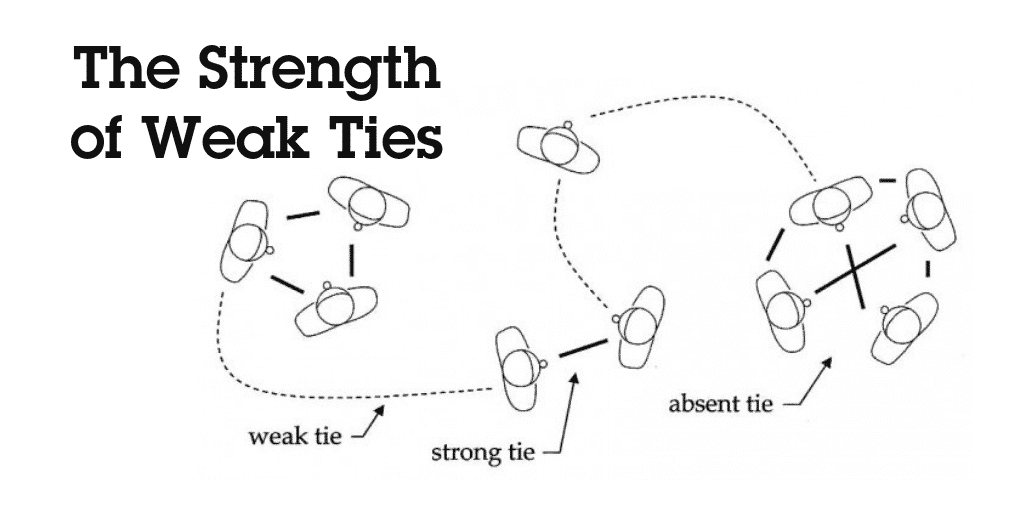 We all have had a moment where we desperately needed to go to bed but for some reason, your brain tells you to think about that one moment in your past that still makes you cringe to this day. This is what happened to me a couple years ago, but oddly enough I did not cringe. Instead, I was hit with a wave of emotions and enlightenment. I have lived my whole life not as a lie but close to it. I believe an article written by Saylor Academy hit the nail right on the head when explaining Face Management theory. Face Management Theory “acknowledges that individuals are concerned about how others perceive them.” This was the lie but not a lie that I was living until recently. It can be classified as a lie, but not to another individual, but to myself. I was not true to who I was as an individual because I was always concerned with my public appearance and how others saw me rather than fulfilling my own destiny. I would act in certain ways depending on who I was around, dress differently, but more importantly, I was not expressing who I was because I was concerned that the image I expressed would not mix well. This lie caused me to appear happy and have a lot of friends, but the sad reality was I was lonely with zero true friends because I was not true to myself. I was too concerned with the Face rather than my own identity.
We all have had a moment where we desperately needed to go to bed but for some reason, your brain tells you to think about that one moment in your past that still makes you cringe to this day. This is what happened to me a couple years ago, but oddly enough I did not cringe. Instead, I was hit with a wave of emotions and enlightenment. I have lived my whole life not as a lie but close to it. I believe an article written by Saylor Academy hit the nail right on the head when explaining Face Management theory. Face Management Theory “acknowledges that individuals are concerned about how others perceive them.” This was the lie but not a lie that I was living until recently. It can be classified as a lie, but not to another individual, but to myself. I was not true to who I was as an individual because I was always concerned with my public appearance and how others saw me rather than fulfilling my own destiny. I would act in certain ways depending on who I was around, dress differently, but more importantly, I was not expressing who I was because I was concerned that the image I expressed would not mix well. This lie caused me to appear happy and have a lot of friends, but the sad reality was I was lonely with zero true friends because I was not true to myself. I was too concerned with the Face rather than my own identity.
The article acknowledges that it is an assumption of Face Negotiation Theory “that people in all cultures work to maintain face in all situations [and]… the root of conflict is based on self-management on an individual and cultural level.” In a study done by Tomkins and McCarter in 1964, they discovered that there are only seven universal facial expressions. The expressions of anger, joy, disgust, fear, joy, sadness, and surprise are universal, but every other emotion felt depends on the culture surrounding the individual. The main reoccurring factor is Face, or “the projected image of one’s self in a relational situation”(436). This theory acknowledges that different cultures have different facework or “specific verbal and nonverbal messages that help to maintain and restore face loss and to uphold and honor the face gain”(436). The connections are made that connect the type of culture to the type of face concern to the type of conflict style that would be used to manage the conflict. In cultures, Collectivistic culture, or when “people identify with a larger group that is responsible for providing care in exchange for the group loyalty” is the main source of belonging. They build loyalty to the group and depend more on the ‘us’ rather than the ‘I’.
For me, I went wrong in a couple of places. First and foremost my I was overly concerned with the Face. I deemed the projected image of self to be greater than my true self. This caused me to act differently depending on who I was around to best fit in. I am not proud of this but it has taught me how to get along with a more diverse group of individuals. As a direct result of bonding with different groups from different cultures, my knowledge about facework has multiplied. I am able to pick up on specific cues and nonverbals from different cultures and understand the difference when deciphering their meaning. I believe collectivistic culture played a major role, but I also believe that the role it played should have been less substantial than it actually was. Instead of being one of the leading factors, I should have focused a little more on the I or Me as the individual rather than putting more thought into us or Team if I may. In hindsight, it is obvious that I have been avoiding the battle within me for a long time. I withdrew from having this conversation because I did not want to openly discuss this concept with myself because I feared the fact that I did not truly have a definition of who I was as an individual, and relied too heavily on others to mold my personality. I had no self-image, but who knew that all I needed to do was admit to myself my faults and life would find a way to set me on the path of finding my own individuality.
 It is official, “the cat is out of the bag.” This saying is one that we all have been hearing for as long as people have been telling secrets. But it’s funny how once that bell is wrong it is impossible to unring it. When I was in the second grade my teacher Mrs. Serano taught us a valuable lesson. There were rumors going around the entire school that one girl kissed a boy behind a bush during recess. When a second grader here’s this it spreads faster than the wildfires in California, within the hour it was the topic of the playground. Once my teacher heard about the rumor, and having both of the kids in her class she figured the topic of secrets and rumors needed to be addressed. The next day there were tubes of toothpaste on everyone’s desk. We were all puzzled. She told us all to poke as many holes in the tube as we wanted and squeezed all of the minty freshness out onto paper towels. But what she said next caught all of us off guard. She said, “Now put all of the toothpaste back into the tube”. No one could figure out a way where this could be done. This essentially taught us Communication Privacy Management theory, as well as the importance of trusting who you tell your secrets to. The article
It is official, “the cat is out of the bag.” This saying is one that we all have been hearing for as long as people have been telling secrets. But it’s funny how once that bell is wrong it is impossible to unring it. When I was in the second grade my teacher Mrs. Serano taught us a valuable lesson. There were rumors going around the entire school that one girl kissed a boy behind a bush during recess. When a second grader here’s this it spreads faster than the wildfires in California, within the hour it was the topic of the playground. Once my teacher heard about the rumor, and having both of the kids in her class she figured the topic of secrets and rumors needed to be addressed. The next day there were tubes of toothpaste on everyone’s desk. We were all puzzled. She told us all to poke as many holes in the tube as we wanted and squeezed all of the minty freshness out onto paper towels. But what she said next caught all of us off guard. She said, “Now put all of the toothpaste back into the tube”. No one could figure out a way where this could be done. This essentially taught us Communication Privacy Management theory, as well as the importance of trusting who you tell your secrets to. The article  At this point in our life, we have all worked in groups in one shape or form. Whether it is for a group project for your least favorite class, or working in your dream job to accomplish a life-changing project. Either way, you must bond with your group. Now picture this, you took charge of the group either as a leader or even a boss. Is it better to force the group to establish strong ties or to let them continue their actions and let the group decide what ties are going to be established? Personally, my boss thought that forcing all the co-workers to have strong ties would be most beneficial. Although scholars can see benefits from strong ties, this instance it held the team back from reaching our full potential. Here is why weak ties can be more important to group health than forcing the development of strong ties. Ian Leslie wrote an article that shows the importance of weak ties and how they can boost happiness and create a greater sense of belonging.
At this point in our life, we have all worked in groups in one shape or form. Whether it is for a group project for your least favorite class, or working in your dream job to accomplish a life-changing project. Either way, you must bond with your group. Now picture this, you took charge of the group either as a leader or even a boss. Is it better to force the group to establish strong ties or to let them continue their actions and let the group decide what ties are going to be established? Personally, my boss thought that forcing all the co-workers to have strong ties would be most beneficial. Although scholars can see benefits from strong ties, this instance it held the team back from reaching our full potential. Here is why weak ties can be more important to group health than forcing the development of strong ties. Ian Leslie wrote an article that shows the importance of weak ties and how they can boost happiness and create a greater sense of belonging.